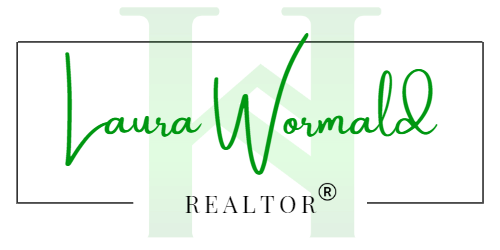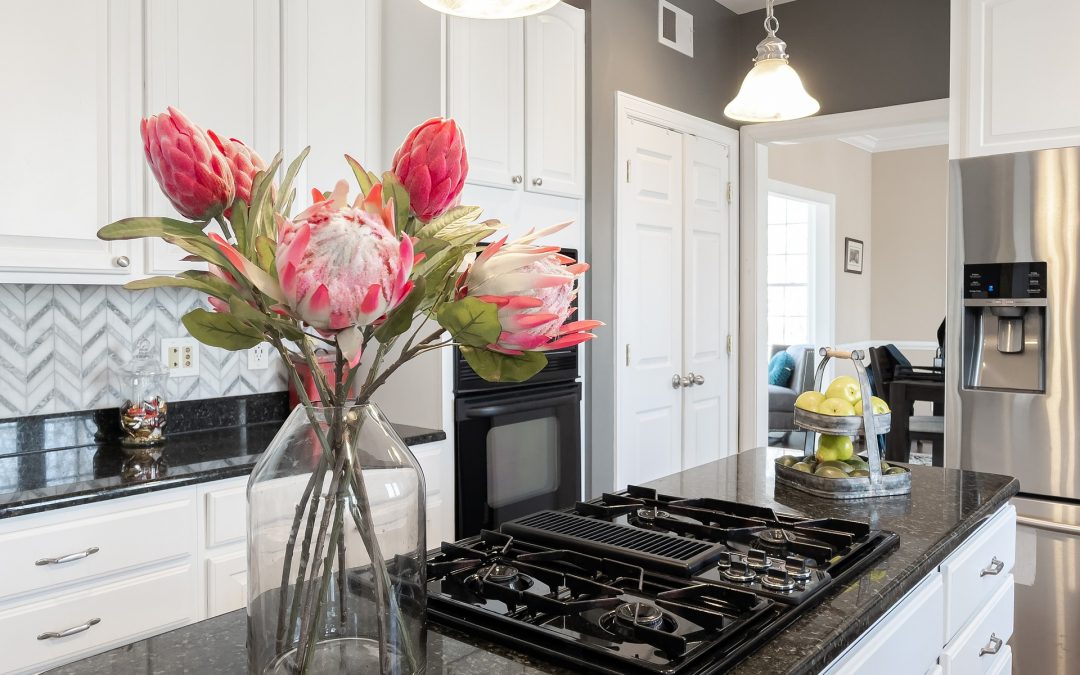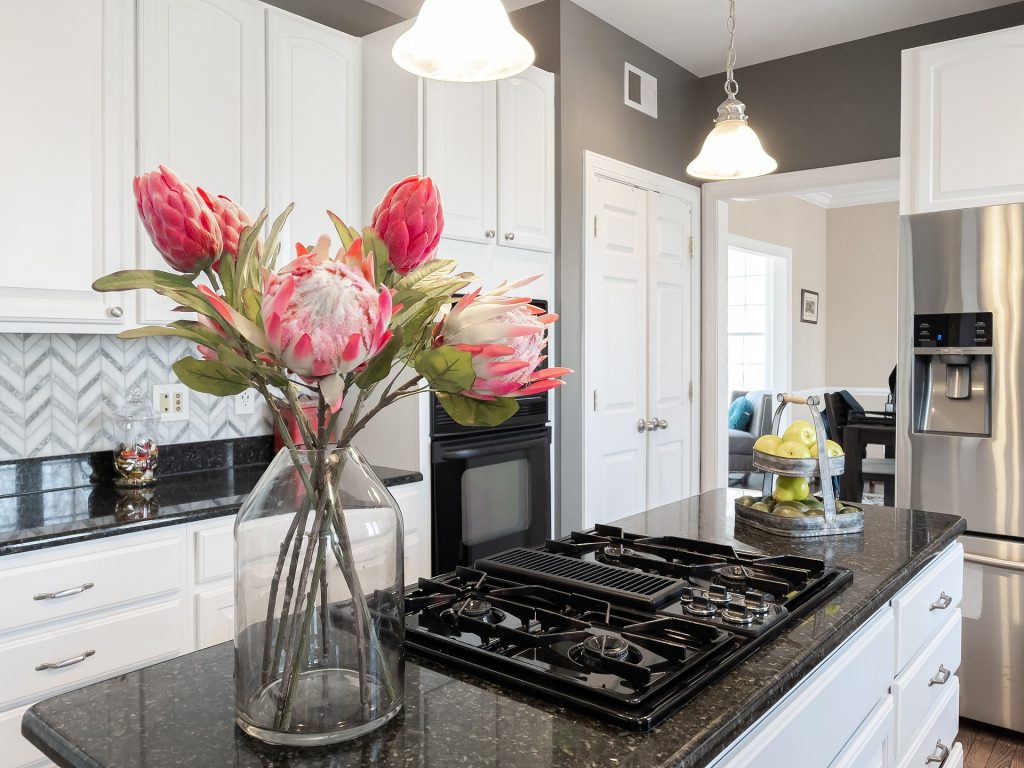The short answer is YES! Staging your home helps it sell faster, often for higher percent of asking price. So today I’m giving you the top five things every seller needs to do to stage your home before you put it on the market.
What To Do First
The top item on my list sets the tone for everything else you will do. Number one is to declutter everywhere in your home including the garage. You need to do a deep dive into decluttering. I will give you good information about why this is the center of it all. It truly benefits you to declutter and stage your home before you list it. There is psychology involved in clutter, the act of decluttering, and the impact on prospective buyers who are in your home. There are two important things that we need to remember about clutter. The first one, and probably the most important, is that clutter is very stressful. Most of us have clutter in our lives. I have clutter in my life. I’m sure you probably have clutter in yours. Very few people don’t. Most people are living with it and we don’t realize how stressful it is. If you feel stressed most of time, take an honest look at the volume of clutter in your life. You will be amazed at how much better you feel when you’re not living with so much of it anymore.
This really matters in selling your home because when a buyer comes into your home you want them to stay for a while. Most showings that yield an offer last 45 minutes to over an hour. When they’re touring your home, if they get out quickly that’s not a good sign. You want the buyer to stick around; you want them to stay in your home and imagine it being their home. If your home has a lot of clutter, it is a subconscious stressor. A buyer probably doesn’t even understand why they aren’t attracted to staying longer and thinking more about buying. What results from a lot of clutter in your home is that it may make your really great home something that makes their “maybe list” or their “no list” because they just didn’t have the right feeling when they were in your house.
Clutter is Distracting
it interrupts our ability to focus. The other part of what you want to provide as an atmosphere for your buyer is the ability to focus on the great features of your home. That means taking away items that they will naturally focus on if those items are sitting there. When you have a lot of stuff, that’s what people see. You want them to focus on the features of your house that will stay when you leave. You don’t want them to focus on all your stuff that you’re taking with you when you go. Often they won’t even know they’re doing that; you just won’t get an offer.
Let’s run down a little bit about what this decluttering process looks like. You might not think you want to do this, but you will feel less stressed when you’re finished. Think deeply about what you can pack up and remove before you list your house. You’re moving out soon, so you’re going to need to do this anyway. Part of your move process is going through every single item that you own and deciding if you’re going to keep it, give it away, sell it, or throw it away. All I’m asking is start getting prepared for your move before you put your house on the market. The other thing about that is how grateful you will feel later when you’re moving and all of this is done. You think you’re stressed now? Wait until you have a move-out deadline and you’re looking at all the stuff you have to pack. If this part is done, it will lift a million pounds off your shoulders once your house is pending and you’re in the thick of it all. My sellers who do this sell their homes faster, and report feeling positive about how the process went for them.
Impact on Buyers
I hear what buyers say when they tour homes. I’ve learned is that no matter how a person may live in their own home, when they’re touring your home they picture it looking the same way when they live there. It’s not something that people look at each other and go “Oh! this is how it’s going to look when we live here.” It’s a subconscious assumption that the mind makes. What the buyer sees and how they feel when they are in your home is what their subconscious tells them they will see and feel when they live there. If it’s really stressful for them, they’re thinking about how they’ll need to change it, the cost, and the time it will take. The longer that list, the less likely an offer is forthcoming; or it will reflect the cost of what they’ve calculated as they’ve thought about all the work they’ll have to do. Giving them less noise and more space is a better opportunity to fall in love with the features of your home. Help them picture themselves as the happy new owner. That’s what you want them doing because if they come in and leave in five minutes, they’ll probably never be back. The time you spend on this will be worth it. If you must spend any money it won’t be much and worth every penny.
Where Do I Start
Let’s talk about what decluttering really means. Do not move everything out to the garage! That’s not decluttering; that’s relocating the clutter. Your garage should say “look at all of the great space you’ll have for your car, your lawn tools, and your recreational gear!” Strongly consider a storage unit. Many places offer competitive introductory rates and no contract. As you go through every room in your home, imagine that one month from now you’re not going to be living there anymore. Ask yourself what you really need to stay just for one more month. Make that the foundation for decluttering. Once you get to what’s left, ask yourself, “Can I put this away? Can I keep it here but have it out of sight?” If you’ve truly pretended you’re going to be out of your home in a month, then you should have plenty of space in your cabinets and closets to put things away and have your home look neat and organized. Take everything you can live without off the top of your counters and tables. Organize your cabinets and closets so everything you have left in them fits nicely. The subconscious message is “Hey buyer, look! All your stuff is going to fit in these neatly organized storage spaces.”
Second is cleaning. Clean like a crazy person. Clean like you have never cleaned before. We don’t really need to go into a lot of detail here because during the declutter process you’re going to see what needs to be cleaned. So just make sure after all the work you have done to declutter your home, it is squeaky clean including areas where normal visitors to your home don’t necessarily look. Ceiling to floor – corners, behind things– get rid of cobwebs, dust, pet hair, garbage, and stains. Don’t forget about your windows and your window tracks. Make sure that your windows are sparkling clean, and clean those window tracks with a toothbrush. Many buyers don’t realize that they notice this, but it really gives the overall appearance that you’re taking care of the home. Let people know that you take great care of your home by having it as clean as it has ever been when you put it on the market.
Make It Shine
Third is lighting. Maximize every opportunity for natural light that you can. If you have room darkening window treatments — I have them because I like to sleep in the dark — replace them with an inexpensive white sheer. Open the blinds, make sure that you’re getting all the free natural light into your home that mother nature will provide. Then look at the light bulbs you have in the lighting in every room of your home. If you have the soft glow that may be a little bit yellowish, replace those bulbs with the bright white or the clean white light bulbs so that you really maximize how bright you can make your home. This really helps with the ambiance that you’re creating for your potential buyer. All of this is about creating an ambiance. You’re staging your home; you’re making it inviting to a buyer so you want to make sure that they can see it.
Fourth is neutralizing. I’m not talking about your furnishings or really even your drapery. I’m mostly referring to any colors that you might have on your walls. Do you have darker colors or brighter colors on your walls? Please strongly consider painting those so that you really maximize what we’ve been talking about, the ambience — the clean, bright, inviting, open atmosphere you want the buyer to experience. If a buyer makes an offer on a home that has a lot of color in the walls, that offer might be a lower. Often they’re figuring in the cost of having to repaint everything before they can move in. You can take care of that now so you maximize the offers you’ll get and stay in line with all the other work that you’ve done to create the ambience of staging your home.
The Nose Knows
Fifth is scent. Is your scent inviting and pleasant? Or is it a smell? Or (heaven forbid!) an odor? Which one of these do you have? Know the difference. It’s very important. This is the fifth and final piece. Every home has a scent created by living in it. Yours has one, mine has one. We all have a scent in our home, and guess what! We have gone nose blind to it. You have to listen to a neutral third party. Often that’s me. Then make sure that you are focusing on day-to-day things that create a smell or odor in your home such as cooking, litter boxes, dogs. I have a dog and her food will create an odor in my home if I’m not careful. Make sure you know what creates the scent, smell, or odor in your home. Then be proactive in creating the scent you want to have; one that is pleasing. I strongly encourage you to choose either vanilla or cinnamon, or something like apple pie. These are generally pleasing to most pallets. You can create that scent with plugins you place all around your home. This makes the scent consistent throughout, and attractive to most. You’re keeping that relaxing, inviting ambiance.
I promise, this works! I have seen it over and over again.
Are you ready to get going? If you live in the Greater Indianapolis area, I’m happy to pay you a visit and help you know where to start and what to focus on in your space. Reach out, I’d love to hear from you.


